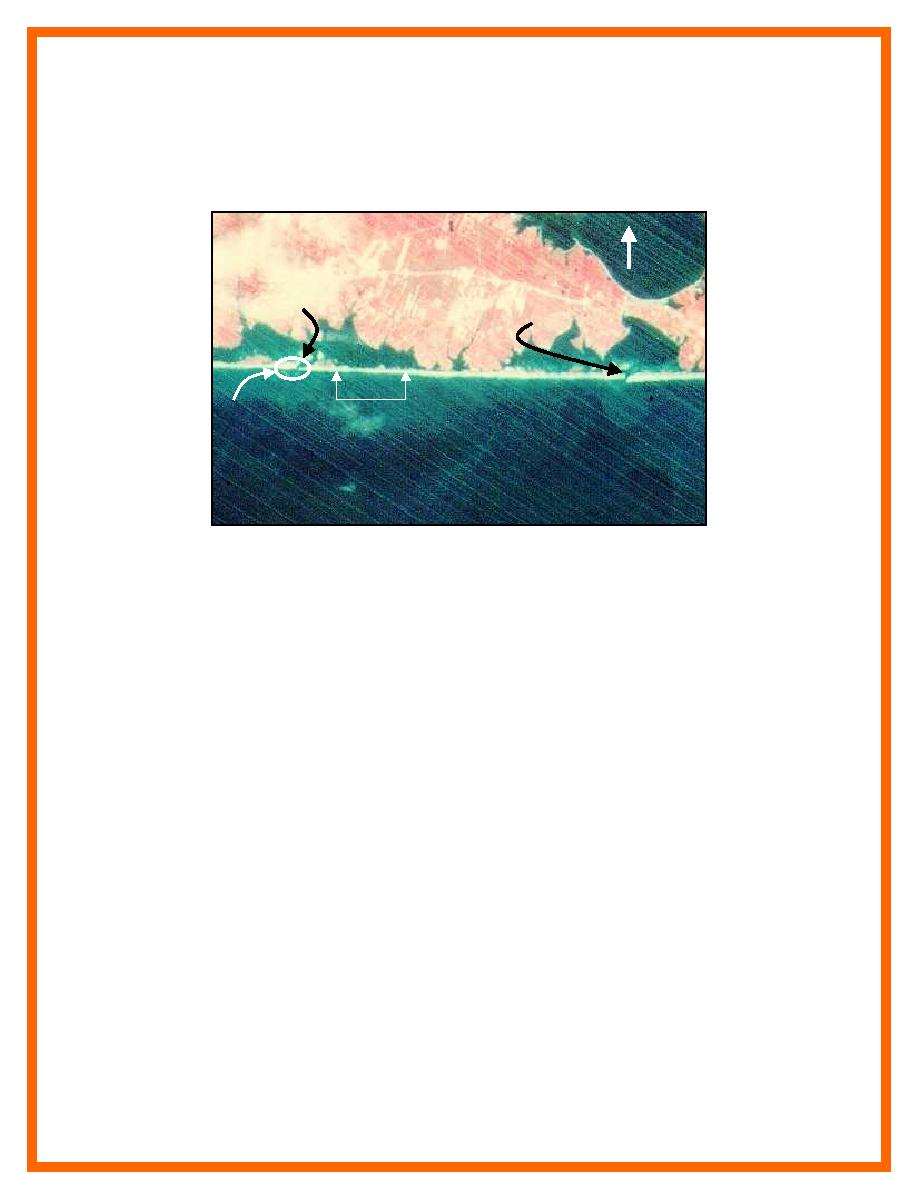
ERDC/CHL TN-IV-22
March 2000
manner. A prototype example of this situation is Moriches Inlet, New York. From 3.2 to 8.6 km
updrift of Moriches Inlet, beach fill totaling 2.9 million m3 was placed during 1996-1997, and
renourishment is planned on 3- to 6-year intervals for 27 years, averaging 288,000 m3/yr
(Figure 2).
N
Moriches
Shinnecock
Inlet
Inlet
Updrift Fill
Anticipated
Shoaling
Figure 2. Location of beach fill placed updrift of Moriches Inlet,
New York
Considering a regional scale of coastal processes, this beach fill material will be transported
towards Moriches Inlet in the net (westerly) direction of longshore sediment transport. As a
conservative estimate, it could be assumed that shoaling in the inlet would increase by the
renourishment rate, roughly 288,000 m3/yr. A proactive dredging plan will include budgeting for
this possible increase in the out-year Operation and Maintenance schedule, as well as monitoring
the shoaling rate and region of deposition, and modifying the plan as appropriate.
Minimize rehandling of adjacent dredged material placement
Inlets located on coasts with a dominant direction of net longshore transport typically exhibit
severe and chronic erosion on the adjacent down-drift beach. This eroding region is a logical site
for placement of dredged material from the inlet. However, wave refraction over the ebb tidal
delta combined with flood tidal current, can create a local reversal in the net longshore sand
transport direction along this down-drift beach (see red arrows in Figure 1). Dredged material
placed in this region tends to be transported updrift or back towards the inlet, where it can pass
over, through, around the tip, and around the backside of the jetty (see green arrows in Figure 1).
The result is an increased shoaling rate in the inlet, rehandling of the shoaled sediments, and
limited benefits to the downdrift beaches.
Structural alternatives to mitigate for the transport of sand out of an erosive adjacent beach
include construction of groins, detached breakwaters, spur jetties, and sand tightening of the jetty
(if sand is transported through or over the structure). Non-structural alternatives include placing
larger-grained (and therefore more stable) sediment on the beach, perhaps from an upland or
3


 Previous Page
Previous Page
